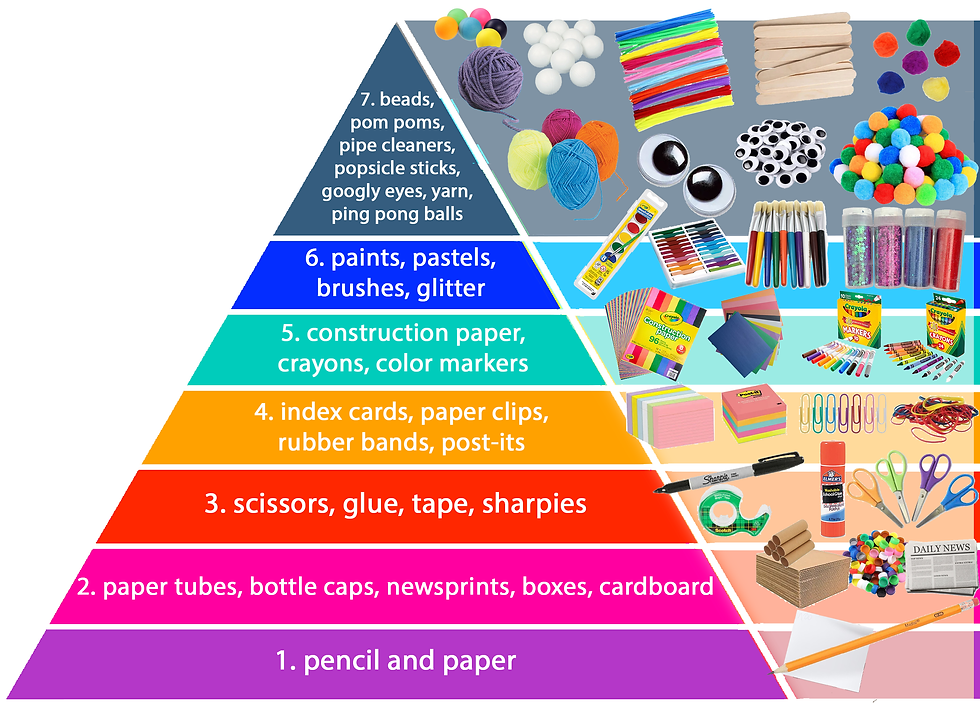

Makerspace
Innovation doesn’t require expensive tools to begin. Most of what students need—pencil, paper, and imagination—are found in the bottom tiers.
-
Tier 1: Pencil, paper, and student creativity — the true foundation of innovation
-
Tier 2: Recycled or found materials (cardboard, bottle caps, containers)
-
Tier 3: Basic classroom supplies most teachers already have (scissors, tape, glue)
Higher tiers can include optional extras such as craft tools, specialized materials, or technology—but they are not required. The visual reinforces that meaningful innovation can start small and grow with available resources.
You can also intentionally limit certain materials, supplies, or tools. For example, provide pencil and paper, but restrict the use of glue or tape. This challenges students to think creatively about how to connect materials and surfaces in other ways.

Make it happen


Resources and Funding
Resources & Funding for Innovation Projects
Innovation lessons don’t have to be expensive. There are many ways to get the materials you need!
Start with a Proposal
Funding often begins with a simple idea and a clear plan. Try asking:
School admin or district
For teachers in Silicon Valley and California, ask about Proposition 28 funds for arts and innovation. Consider starting a school club for innovation with the funds.
PTA or PTO
Share a short proposal showing how students benefit.
Classroom families
Send a class newsletter asking for support. Include what the project is and how supplies will be used.
You can also try:
DonorsChoose – Create a classroom project to request supplies.
Amazon Wishlists – Share a list for families or donors.
RAFT (Resource Area For Teaching) – Offers low-cost materials, maker ideas, and teacher training.
See also Funding.
What to Include in Your Proposal
Use this simple format:
-
What you're asking for (supplies or funds)
-
Why it matters (what students will learn or gain)
-
What you'll do (specific projects or lessons)
-
What you need (specific items or estimated cost)
Supplies for Innovation Projects
You can ask for donations or shop in bulk for these items. Click on this link for a starting supply list.
Storage and Clean-Up Tips
You’ll need storage for supplies and student projects, including bins to collect scraps.
For student projects:
Use plastic pouches labeled with names. Store in a large bin.
For supplies:
Use clear plastic bins or tubs. These are durable and help students find materials easily.
If you have a shared grade-level space, store items there and consider sharing supplies.
Clean-Up Tips:
-
Give students time to clean up
-
Assign classroom jobs
-
Offer praise or rewards for teamwork